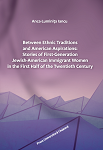
| REZUMAT: | Throughout centuries, the United States has drawn immigrants from almost every country in the world, as a promised land of democracy, equality, and freedom. During the nineteenth century and at the beginning of the twentieth century, great numbers of immigrants, mostly from European countries, left for the United States in search of their individual American dreams. Based on U. S. Census data, Kathie Friedman-Kasaba states that “between 1881 and 1924 the United States received, from all origins, over 26 million new immigrant arrivals”, pushed from their home countries because of complex political, social, economic, and cultural circumstances. In the United States, the Progressive era, roughly defined as the first two decades of the twentieth century, was also a time of great social, economic, and political upheaval and change. Thus, immigration played a key role in providing the necessary workforce (and cheap labor) to support the ever-increasing processes of industrialization and urbanization. At the same time, mass migration led to an important growth in population, from “76 million in 1900 to over 106 million in 1920” (Eversole, “The Progressive Era” 80). As a result, “immigrants composed 15 percent of the general population” as “over 1 million immigrants arrived each year” between 1900 and 1910 (Eversole, “The Progressive Era” 81). |